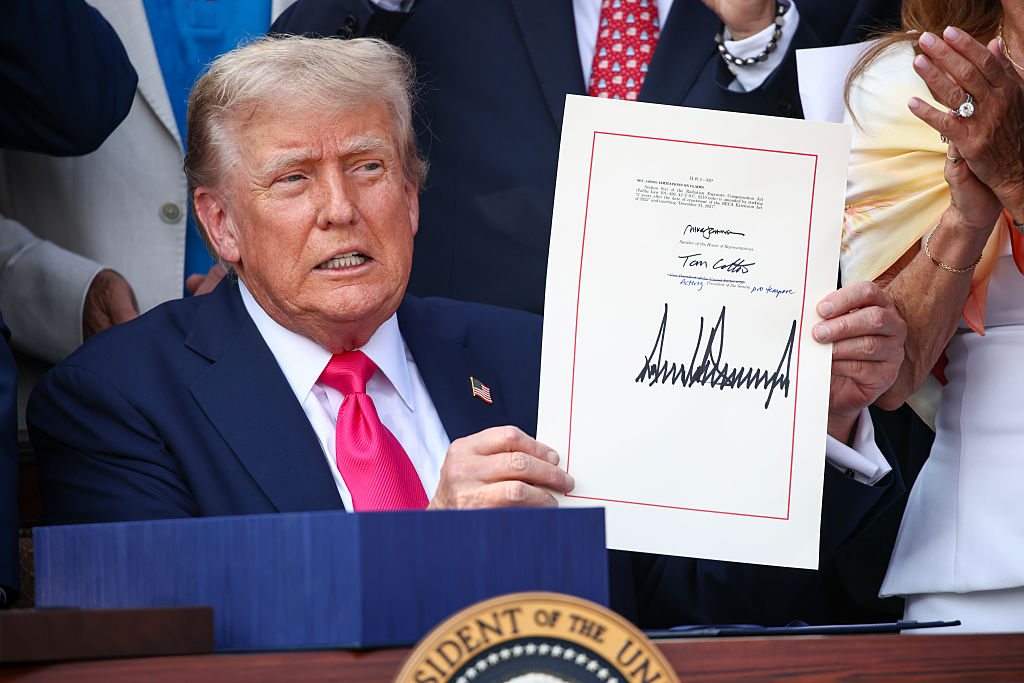Trump turns his trade guns on Mexico
Locked in an impasse with China, the White House has now also initiated a major trade escalation with Mexico.

Donald Trump's trade policies display "all the finesse of an elephant attempting embroidery", says The Economist. Locked in an impasse with China, the White House has now also initiated a major trade escalation with Mexico. America's neighbour and largest trading partner has until 10 June to clamp down on the flow of migrants into the United States or face tariffs of 5% on all imports. The levy could eventually rise to 25%.
The move surprised markets, which had thought that US-Mexican disputes had been settled. Mexico's peso slid to five-month lows against the US dollar. America's S&P 500 has had its second-worst May since the 1960s, losing almost 7%. The Trump administration has also ended India's special trade status, which had eliminated some tariffs on Indian imports, although the impact is expected to be limited for now.
More damage to come
"The optimistic view" is that market weakness could prod Trump back to the negotiating table, says Tom Stevenson in The Daily Telegraph. He regards the level of the Dow as "the scorecard of his presidency". Yet this "Trump put" argument ignores China's "deep-seated aversion" to being told what to do by foreigners. If it has concluded that Trump's real aim is to keep China in "a state of permanent inferiority" then it may be loath to cut a last-minute deal.
Subscribe to MoneyWeek
Subscribe to MoneyWeek today and get your first six magazine issues absolutely FREE

Sign up to Money Morning
Don't miss the latest investment and personal finances news, market analysis, plus money-saving tips with our free twice-daily newsletter
Don't miss the latest investment and personal finances news, market analysis, plus money-saving tips with our free twice-daily newsletter
A convenient excuse
Nowhere to hide from the trade war

A few weeks ago, "I suggested Mexico as a haven from the trade war", says John Authers on Bloomberg. But the abrupt targeting of Mexico shows that there may not be any reliable sanctuaries from Trump's tariffs. Ironically, the US and China may be less badly affected than elsewhere by their own trade war, says Tom Holland of Gavekal Research. US exports account for just 12% of GDP and there is room for the Fed to cut rates in the case of a slowdown. China also enjoys similar "policy room" for manoeuvre.
By contrast, about 45% of Europe's GDP comes from exports, leaving the continent's economies exposed to a global trade slowdown. Interest rates are already negative. Japanese and European carmakers earned a reprieve from Trump on new car tariffs last month, but his capricious decision to penalise Mexico is a reminder that US policy can change at any moment.
That unpredictability is a problem for emerging markets too, says Udith Sikand, also for Gavekal Research. Vietnam has been a popular play for those looking for a trade-war winner, but it could soon find itself being labelled a "currency manipulator" by Washington. That threat, coupled with the sheer scale of China's manufacturing industry, makes it unlikely that there will be a "wholesale shift of manufacturing away from China", as some have predicted. South Korea is one Asian economy already showing signs of strain. Slowing global demand for semiconductors helps explain why GDP shrank 0.4% in the first quarter. The Korean won has fallen to its lowest levels in two-and-a-half years, says Sotaro Suzuki for Nikkei Asian Review. With overseas shipments accounting for more than 40% of GDP, worsening trade relations have prompted foreign funds to flee the country.
Get the latest financial news, insights and expert analysis from our award-winning MoneyWeek team, to help you understand what really matters when it comes to your finances.
Alex is an investment writer who has been contributing to MoneyWeek since 2015. He has been the magazine’s markets editor since 2019.
Alex has a passion for demystifying the often arcane world of finance for a general readership. While financial media tends to focus compulsively on the latest trend, the best opportunities can lie forgotten elsewhere.
He is especially interested in European equities – where his fluent French helps him to cover the continent’s largest bourse – and emerging markets, where his experience living in Beijing, and conversational Chinese, prove useful.
Hailing from Leeds, he studied Philosophy, Politics and Economics at the University of Oxford. He also holds a Master of Public Health from the University of Manchester.
-
 Revolut launches its first stocks and shares ISA with BlackRock and Vanguard ETFs
Revolut launches its first stocks and shares ISA with BlackRock and Vanguard ETFsA year after getting its UK banking licence, Revolut is now launching its first stocks and shares ISA with a suite of exchange-traded funds (ETFs) from BlackRock and Vanguard.
-
 What does Trump’s ‘Big Beautiful Bill’ mean for the US economy?
What does Trump’s ‘Big Beautiful Bill’ mean for the US economy?Donald Trump’s budget bill will slash taxes, but is expected to add at least $3 trillion to US national debt